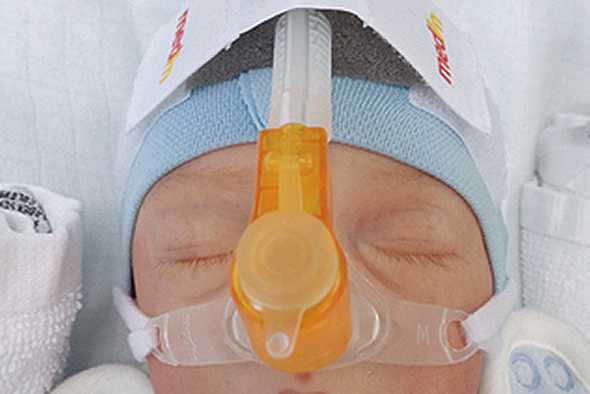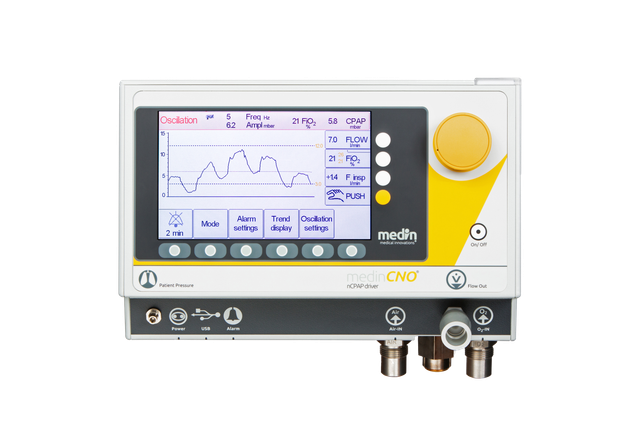
nHFV combines the benefits of high-frequency ventilation and non-invasive CPAP support (
The benefits of CPAP thus include the pronounced ventilatory effect of the high-frequency ventilation. While peak pressures and target volume changes are used with conventional modes such as NIPPV in order to eliminate carbon dioxide, this effect is achieved in nHFV through the high-frequency oscillations. The patient is not exposed to any fixed breaths. In addition, no synchronization is necessary.
Effective CO2 washout
No synchronization needed
Combination of HFV and nasal interface
Ideal supplement to conventional non-invasive respiratory support
Available in the medinCNO device
The carbon dioxide elimination takes place in the upper airway in the form of a washout effect (
However, nHFV is also increasingly being used as primary respiratory support since it is an ideal complement to conventional non-invasive respiratory support.
In addition to the effective carbon dioxide washout, nHFV can stabilize the airways and thus has a positive effect in apnea-bradycardia syndrome.
The indications for nHFV are (

The medinCNO is the only CPAP device worldwide which can offer you nasal high-frequency ventilation. In combination with conventional modes such as nCPAP, ApneaCPAP, SNIPPV and NIPPV, nHFV in the medinCNO is an effective instrument for individually adapting the non-invasive respiratory support to the patient.
The efficacy with regard to avoiding intubation, CO2 washout as well as positive effects on circulation were able to be demonstrated in studies (
First adjust the optimal CPAP pressure for the patient with regard to oxygenation and breathing effort. With a so-called flow interruptor valve, the breathing gas flow is shifted in the device under high-frequency oscillations. Depending on how far the valve closes, the resultant amplitude is defined with regard to its height. Frequencies are to be set from 300 to 1200 BPM.
The following applies: The higher the frequency, the lower the pressure amplitude. That is, the efficacy with regard to CO2 washout decreases with increasing frequency. A frequency value of 10 Hz is established as an initial setting which must subsequently be individually adjusted to the patient.
Vibration of the upper airway should be sought; by contrast, vibration of the chest is not necessarily needed. The force of the nHFV should not be compared with that of invasive HFV. Leakages, especially via the mouth, and upper airway compliance can suppress the nHFV amplitude (